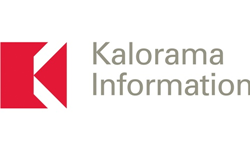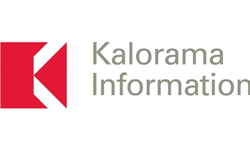
Outside of the U.S. and Europe, there are dramatic fluctuations in the stability of financial markets and economic systems and governments in global IVD markets, which has companies shifting resources every few years, finding the new fast-developing markets.
ARLINGTON, Va. (PRWEB)
April 08, 2021
There are currently 76.1 billion in vitro diagnostics (IVD) procedures annually worldwide. Global IVD procedure volumes are forecast to grow by several billion more through 2025 to 111.3 billion in 2025, as revealed in IVD Procedure Volumes 2020-2025: Immunoassays, POC, Chemistry, Molecular, Microbiology and Other Tests, a recent report by leading medical market research publisher Kalorama Information.
IVD procedures range from glucose to procedures including point-of-care and laboratory tests that are categorized according to the testing technology employed. Approximately 20 different technologies have been adapted to IVD applications. Clinical chemistry, hematology, and immunoassays comprise the top three disciplines based on number of tests performed worldwide. Molecular assays are expected to command the fastest growth in global procedural volume but will continue to make up only a small portion of total IVD activities. Among other IVD testing technologies, conventional microbiology, coagulation (hemostasis), histology, and cytology are the most widely employed.
Looking ahead, Kalorama Information anticipates the United States will account for the largest volume of IVD procedures implemented worldwide in 2025. The country will maintain a high, diverse level of tests based on its advanced medical delivery system, high healthcare spending intensity, and widespread health insurance coverage of the population. Moreover, its volume of IVD procedures will rise as patient care strategies place an increasing emphasis on early disease detection.
Kalorama Information highlights several areas of growth outside the U.S. and despite the maturation of IVD markets in developed countries. For one, the market’s aforementioned prominence in developed nations has IVD companies continuing to cast their nets in developing countries where rising incomes and standards of living are anticipated to spark a new health-conscious population with growing demands for quality medical care. While once the focus was on the BRIC countries of Brazil, Russia, India and China, IVD companies now prefer to look at secondary markets of interest for IVD companies including Saudi Arabia, South Africa, Colombia and Vietnam. But the primary focus is on the top seven emerging markets:
- China
- Brazil
- Turkey
- Korea
- India
- Russia
- Mexico
“Global sales are the source of growth for the industry, but not without considerations. Outside of the U.S. and Europe, there are dramatic fluctuations in the stability of financial markets and economic systems and governments in global IVD markets, which has companies shifting resources every few years, finding the new fast-developing markets,” says Bruce Carlson, publisher for Kalorama Information.
This begs the question, “where are the best markets?”, notes Carlson. As a starting point – one of the major aspects of commercial potential is to look at available market, which Kalorama Information suggests is implied by the percent of the population that is urban, since urban populations usually have more access to healthcare in the way of physicians, hospitals, and clinics. As the governments in developing countries increase the healthcare infrastructure to rural communities, there is expected to be a significant enlargement of the market for diagnostics. These diagnostics would cover many of the primary care segments related to diabetes, anemia, hypertension, infectious diseases, sexually transmissible diseases and cancer screens.
Beyond location, other notable growth trends for IVD procedures identified by Kalorama Information include, but are not limited to:
- Steady population growth and aging, which will increase the number of individuals vulnerable to acute and chronic medical conditions.
- Evolving epidemiological patterns, which will keep major diseases such as cancer, diabetes, heart failure, hepatitis, HIV/AIDS, influenza, malaria, and tuberculosis major threats to human health.
- The expansion of healthcare cost containment initiatives, which will encourage medical providers to broaden the use of IVD tests to detect serious diseases in early stages when treatment is less costly and more likely to succeed.
- The adaptation of new and existing IVD procedures to point of care (POC) sites in hospitals, outpatient facilities, retail clinics, nursing homes, and other near patient markets.
- The COVID-19 pandemic.
About Kalorama Information:
Kalorama Information, part of Science and Medicine Group, is the leading publisher of market research in healthcare areas, including in vitro diagnostics (IVD), biotechnology, healthcare, medical devices, and pharmaceuticals. Science and Medicine Group supports companies seeking to commercialize the rapidly changing marketplace at the intersection of science, medicine, and technology. Comprised of industry-leading brands, Science and Medicine Group serves analytical instrument, life science, imaging, and clinical diagnostic companies by helping them create strategies and products to win markets and provide platforms to digitally engage their markets through a variety of innovative solutions. Kalorama Information produces 30 reports a year. The firm offers a Knowledge Center, which provides access to all published reports.
Share article on social media or email:

